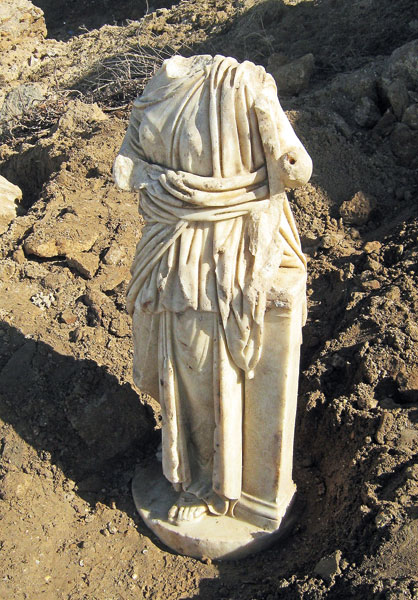
Sometimes Mother Nature can be her own archaeologist.
A 2,000-year-old white marble statue was revealed at the site of Ashkelon last December when a powerful winter storm pounded Israel’s coast with heavy winds and rains and massive waves. As the storm ravaged the shoreline of the ancient port city, a portion of a 30-foot-high cliff face overlooking the site’s modern beach gave way. The long-buried statue—and a host of other ancient remains—tumbled into the sea. Fortunately, Nehemiah Inbar, a longtime Ashkelon resident, noticed the statue amid the waves while surveying the damage caused by the storm and notified the authorities.1
The nearly 4-foot-tall statue, found without its head or hands, portrays a woman in a long, loose-fitting, beautifully draped toga and wearing detailed sandals as she leans against a square pillar. Archaeologists with the Israel Antiquities Authority (IAA) believe the statue may depict the goddess Aphrodite who, fittingly enough, was herself thought to have been born of the waves of the sea. While it is uncertain how and when the statue lost its head and limbs, the other finds from the cliff’s collapse, including architectural and mosaic fragments, suggest the marble, likely an import from Italy or Asia Minor, may have originally adorned a Roman bathhouse that overlooked Ashkelon’s ancient shores.
Already a library member? Log in here.
Institution user? Log in with your IP address.

